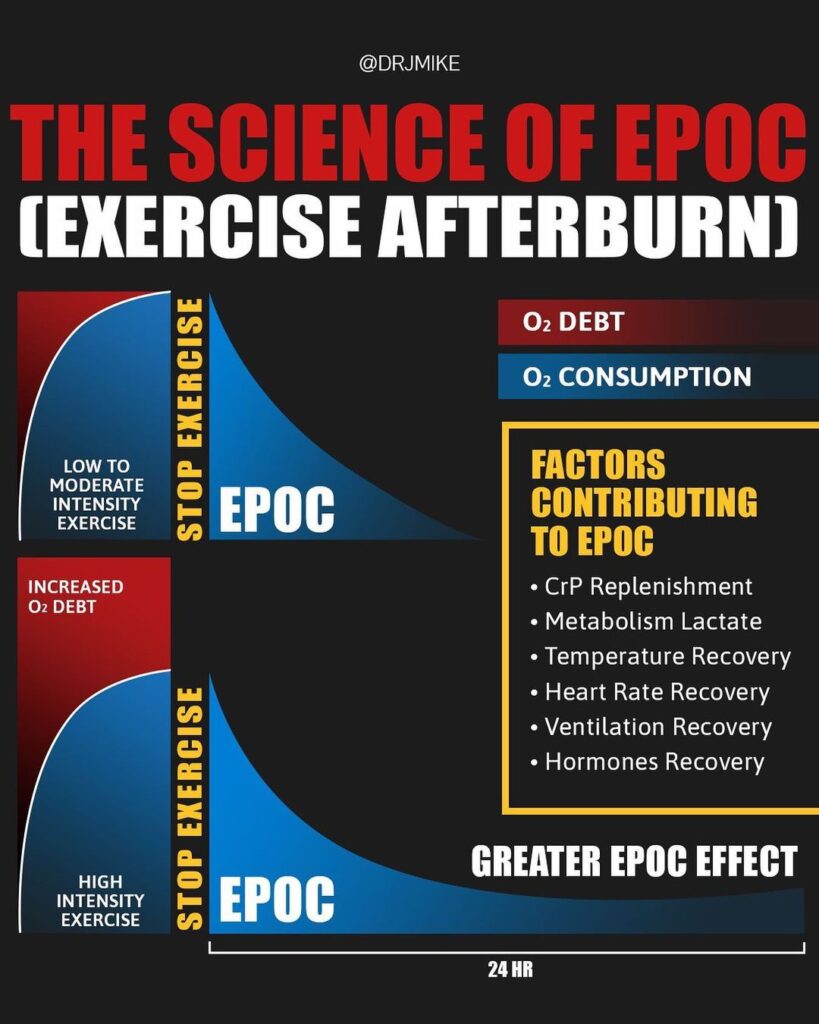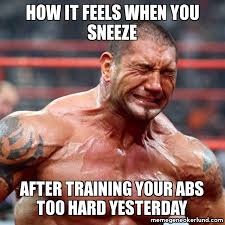
The Truth about EPOC (Exercise Afterburn)
by Dr. Jonathan Mike

EPOC, technically known as Excess Post-exercise Oxygen Consumption, and more generally known as exercise afterburn, has been widely publicized as an explanation for the benefits of high intensity interval training. It’s the recovery period after exercise where there is elevated oxygen consumption. It’s essentially an elevated metabolic rate after exercise.
The purpose of EPOC is to restore the body to its resting state and create adaptations. The main argument is that if EPOC is greater after high intensity exercise, a greater metabolic rate exists for longer periods of time. By that logic, you would burn more calories leading to greater fat loss. However, this is often overstated.
.
At the start of exercise, the anaerobic energy systems supply the needed ATP for this work. The energy provided during this deficit phase of exercise is employed until a steady state is reached, thus the oxidative system is the dominant energy system being used. Those that are highly trained get to a steady state much quicker vs. untrained.
Here’s the real deal
The two biggest factors affecting EPOC are exercise intensity and duration, with intensity being the #1. Some studies have found that EPOC may last up to 72hrs, while others have found it to be much shorter or even a few hours. The large range of EPOC durations is due to differences in exercise intensity, duration and study methods. Despite sensational claims, recent studies conclude that the EPOC effect is fairly small, making only a minor contribution to fat loss. There are also large individual differences in EPOC responses in addition to many factors contributing to EPOC.
.
Take-home message
Those that claim interval training is far superior vs. steady state cardio (or that steady state cardio is bad for you), and use EPOC to back up that claim, they are mistaken. You’ll likely burn the same amount of calories either way. Remember, the biggest driver of fat loss is caloric deficit.
.






